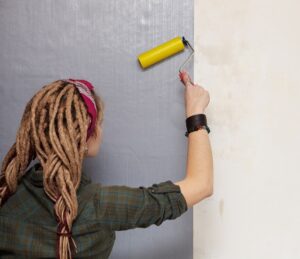
Priming emulsions are recommended for use in many construction works where it is necessary to strengthen the substrate. It is also an essential measure used during renovations. For what types of work is their use recommended? What surfaces can they be placed on? Read the entry below.
The action of priming emulsions is to strengthen the substrate by increasing its adhesion and cutting off the previous layer. Primer emulsions allow you to better prepare the walls before applying wallpaper or painting. After applying the priming emulsion, the walls absorb the applied substance less easily, so the paint sticks to the surface better. Thanks to this procedure, painting becomes easier because the expected effect is achieved faster and it is not necessary to apply several layers of paint. Thanks to the use of a layer of priming emulsion, it is also possible to perform better waterproofing on walls and floors.
What materials are primer emulsions used for?
The most common priming emulsions on the market are deep-penetrating emulsions, adhesion-improving emulsions, bituminous and universal emulsions. Each of them has slightly different parameters and therefore a different purpose. Deeply penetrating emulsions are recommended mainly for old and weak substrates, while bituminous emulsions – for making moisture-proof and protective coatings. If you don’t know what type of emulsion will be right for you, it’s best to buy a universal emulsion. It is suitable for use both inside and outside buildings. All priming emulsions are intended for porous, excessively or unevenly absorbent substrates , made of concrete, aerated concrete, plaster with mineral binders (cement, lime, gypsum). Emulsions are also suitable for raw surfaces made of ceramic or lime-sand materials, as well as for raw gypsum, cement, gypsum, plasterboard and impregnated wood-based boards, for bricks and many others.
